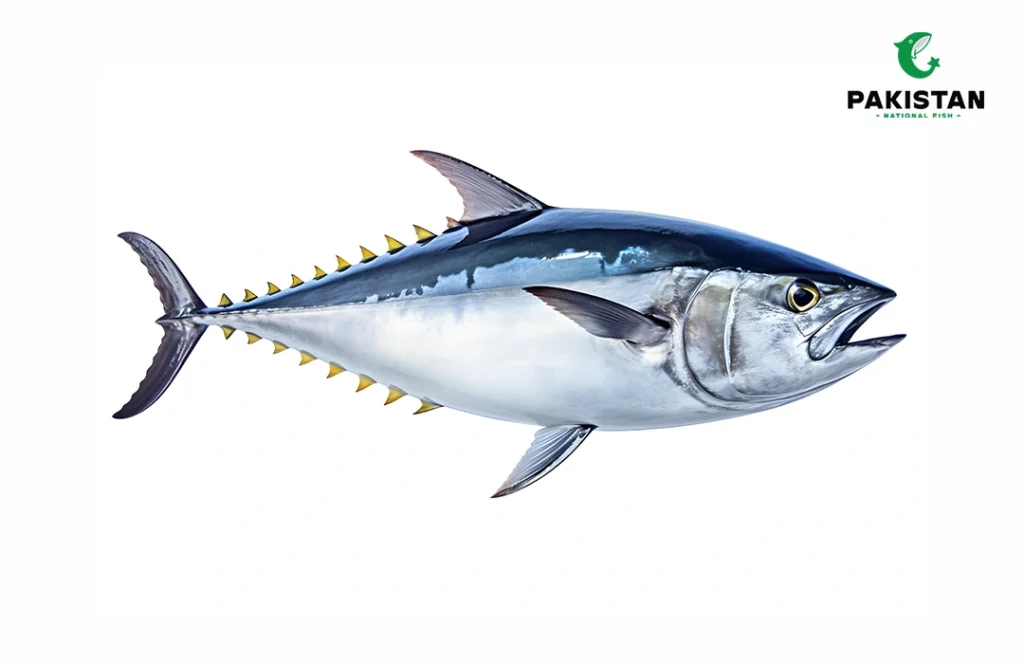Hey there, seafood lovers! If you’ve ever stood in the grocery aisle, staring at cans of tuna or browsing a sushi menu, wondering which type of tuna is the real catch, you’re not alone. Tuna, often swimming alongside billfish in the vast oceans, is a global favorite, loved for its versatility and rich flavor. But with so many tuna varieties out there—albacore, skipjack, yellowfin, bigeye, bluefin, and even the lesser-known scout tuna—it’s tough to know which one suits your plate, health goals, or sustainability values.
In 2025, the tuna family is still making waves, and I’m here to break it all down for you. Let’s dive into the world of tuna, explore its types, and figure out how to pick, store, prepare, and enjoy it like a pro.
Table of Contents
What is Tuna Fish and Why is it So Popular?
What Are the Main Types of Tuna Fish?
• Albacore Tuna (Thunnus alalunga)

Nickname: White tuna
Vibe: Mild, firm, and light-colored, perfect for those who want a less “fishy” taste.
Where It Lives: North and South Pacific, Atlantic, Indian Ocean, and Mediterranean Sea.
Fun Fact: Known for its long pectoral fins, albacore is a favorite for canned tuna, making up about 30% of the U.S. canned market. It’s great for salads and sandwiches.
Skipjack Tuna (Katsuwonus pelamis)

Nickname: Light tuna
Vibe: Small, bold, and fishy, this is the budget-friendly champ of canned tuna.
Where It Lives: Tropical waters of the Pacific, Atlantic, and Indian Oceans.
Fun Fact: Skipjack accounts for over 60% of global tuna catches, often caught in huge schools using purse-seine nets. It’s the backbone of canned tuna, with over 70% of U.S. cans.
• Yellowfin Tuna (Thunnus albacares)

Nickname: Ahi (shared with bigeye)
Vibe: Lean, mild, and versatile, ideal for sushi, steaks, or grilling.
Where It Lives: Tropical and subtropical waters, sometimes as far as Australia.
Fun Fact: Yellowfin is a sushi bar favorite, offering great value without the hefty price tag of bluefin.
Bigeye Tuna (Thunnus obesus)

Nickname: Ahi (shared with yellowfin)
Vibe: Fatty, rich, and robust, perfect for sashimi lovers who crave bold flavors.
Where It Lives: Deep waters of the Pacific, Atlantic, and Indian Oceans.
Fun Fact: Bigeye lives deeper than other tunas, with extra fat to insulate against cold waters. It’s vulnerable to overfishing, so check for sustainable labels.
• Bluefin Tuna (Thunnus thynnus, T. orientalis, T. maccoyii)

Types: Atlantic, Pacific, and Southern bluefin
Vibe: The king of tuna—rich, buttery, and melt-in-your-mouth, especially the otoro (belly) cut.
Where It Lives: Atlantic, Pacific, and Southern Hemisphere oceans.
Fun Fact: Bluefin is the priciest, with a single fish fetching up to $3.1 million in 2019! It’s a sushi delicacy but heavily overfished.
Each tuna variety brings something unique to the table, so your choice depends on taste, texture, and how you plan to use it.
How Do You Select the Best Tuna?
Choosing the right tuna can feel like picking the perfect avocado—tricky but rewarding. Here’s how to nail it in 2025:
- Check the Source: Look for the Marine Stewardship Council (MSC) blue tick for sustainability. For example, albacore from Australia’s Eastern Tuna and Billfish Fishery is a solid pick.
- Fresh vs. Canned: Fresh tuna (yellowfin, bigeye, bluefin) is great for sushi or grilling, while canned (skipjack, albacore) is budget-friendly for salads. White tuna (albacore) is milder; light tuna (skipjack/yellowfin) is bolder.
- Mercury Awareness: Bigeye has the highest mercury levels (0.689 PPM), so limit intake, especially for kids or pregnant women. Skipjack is the safest bet (0.126–0.144 PPM).
- Color and Texture: For fresh tuna, go for vibrant red or pink flesh (yellowfin, bigeye) or pale pink (albacore). Avoid brown or greenish hues unless it’s for cooking.
- Price vs. Quality: Bluefin is premium but costly (up to $400/pound for top cuts). Yellowfin offers great flavor for less ($30–$40/pound).
Pro tip: Ask your server or fishmonger about the tuna’s origin and fishing method. If it sounds fishy, maybe opt for something else!
How Should You Store Tuna Safely?
Tuna’s freshness is key to its flavor and safety. Here’s how to keep it in top shape:
- Fresh Tuna:
- Store in the fridge at 32–38°F (0–3°C) in an airtight container or wrapped tightly in plastic. Use within 1–2 days.
- Freeze at 0°F (-18°C) for up to 3 months to preserve quality. Wrap in freezer-safe bags to avoid freezer burn.
- Canned Tuna:
- Unopened cans last years in a cool, dry pantry. Check expiration dates (usually 3–5 years).
- Once opened, transfer to an airtight container and refrigerate. Use within 3–4 days.
- Sushi-Grade Tuna:
- Keep on ice or in the coldest part of the fridge. Consume within 24 hours for the best raw experience.
- Magic Tip: For fresh tuna, place it on a bed of ice in the fridge to extend freshness by a day.
Proper storage keeps your tuna safe and delicious, whether it’s a steak or a can.
How Can You Prepare Tuna for Maximum Flavor?
Tuna is a culinary chameleon, shining in everything from sandwiches to sashimi. Here’s how to make it sing:
- Canned Tuna (Skipjack/Albacore):
- Tuna Salad: Mix with mayo, diced celery, and a pinch of lemon zest for a zesty sandwich filling.
- Tuna Melt: Layer on bread with cheddar, then broil until bubbly. Add tomatoes for extra zing.
- Pasta Dish: Toss with olive oil, garlic, and cherry tomatoes for a quick weeknight meal.
- Fresh Tuna (Yellowfin/Bigeye/Bluefin):
- Seared Ahi: Rub with sesame oil, sear 1 minute per side, and serve with soy-ginger dipping sauce.
- Sushi/Sashimi: Slice thinly (1/4-inch) and pair with wasabi and pickled ginger. Ensure it’s sushi-grade!
- Grilled Steak: Marinate in soy sauce and sesame oil, then grill 2–3 minutes per side for medium-rare.
- Magic Tip: For a flavor boost, try a poke bowl with cubed yellowfin, avocado, and a soy-sesame marinade.
- Scout Tuna: Smaller tunas like bullet or frigate are great grilled whole or in hearty stews.
Experiment with textures and flavors to find your favorite way to enjoy tuna!
What Are the Nutritional Benefits of Tuna?
Tuna Type | Protein (g) | Omega-3 (g) | Calories | Mercury (PPM) | Key Nutrients |
Albacore | 27 | 0.8–1.0 | 170 | 0.350–0.358 | Vitamin D, B12, Selenium |
Skipjack | 28 | 0.3–0.5 | 130 | 0.126–0.144 | Protein, Potassium |
Yellowfin | 29 | 0.5–0.7 | 140 | 0.354 | B Vitamins, Magnesium |
Bigeye | 26 (raw) | 0.6–0.8 | 120 (raw) | 0.689 | Protein, Selenium |
Bluefin | 30 | 1.66 | 180 | 0.400–0.600 | Omega-3, Vitamin B12 |
- Why It’s Good: Tuna is high in protein for muscle health, omega-3s for heart and brain function, and vitamins like D and B12 for bones and energy.
- Mercury Caveat: Bigeye and bluefin have higher mercury, so limit to once a week. Skipjack is safest for frequent eating (2–3 servings/week).
- Magic Tip: Pair tuna with vitamin C-rich foods (like bell peppers) to boost iron absorption from its protein.
Tuna fits into a healthy diet, but moderation is key due to mercury.
How is Tuna Caught? Exploring Fishing Techniques
Tuna fishing is a mix of art, science, and sustainability concerns. Here’s how these ocean giants are brought to your plate:
- Purse-Seine Nets: Used for skipjack and yellowfin, these nets encircle schools and close like a purse. They account for 62% of global catches but can harm juvenile tunas.
- Longlining: Common for albacore and bigeye, this uses a long line with baited hooks. It catches 14% of tuna but risks bycatch like sea turtles.
- Pole-and-Line: The eco-friendly choice, used for skipjack and albacore. It’s selective, reducing bycatch, but only 11% of catches.
- Trolling: Dragging lines behind boats, often for yellowfin. It’s sustainable but less common.
- Magic Tip: Look for pole-and-line or MSC-certified tuna to support sustainable fisheries.
Overfishing, especially for bluefin and bigeye, is a concern, so choosing sustainably caught tuna helps protect the ocean.
FAQs About Tuna Fish
Q1: What Tuna Sold for $800,000?
Q2: Who is the Largest Consumer of Tuna in the World?
Q3: Who is the Main Exporter of Tuna?
Q4: Which Tuna is Good for Health?
Q5: How Much Tuna is Too Much?
Q6: Where Do Tuna Fish Live?
Final Thoughts
So, which tuna fish is best in 2025? It depends on you! If you want affordable, low-mercury canned tuna, skipjack’s your pal. Craving sushi? Yellowfin or bigeye deliver without breaking the bank. For a splurge, bluefin’s buttery richness is unmatched, but choose sustainably sourced options.
By understanding the tuna varieties, picking wisely, storing properly, and cooking creatively, you’ll make the most of this oceanic gem. Got a favorite tuna dish or tip? Drop it in the comments—I’d love to hear your thoughts!


